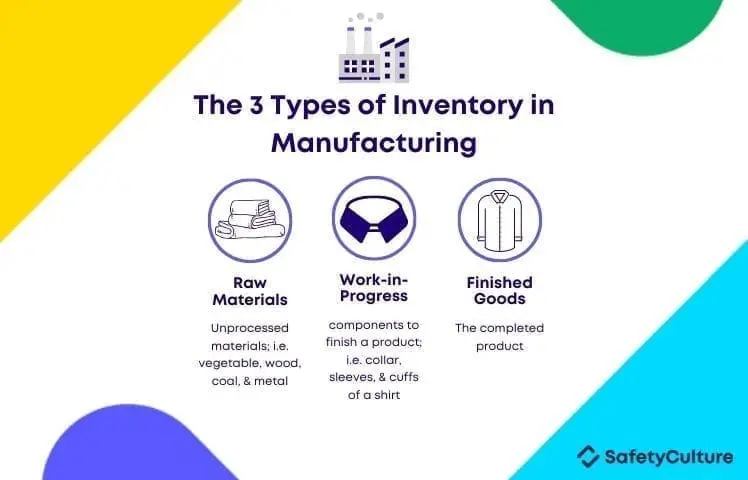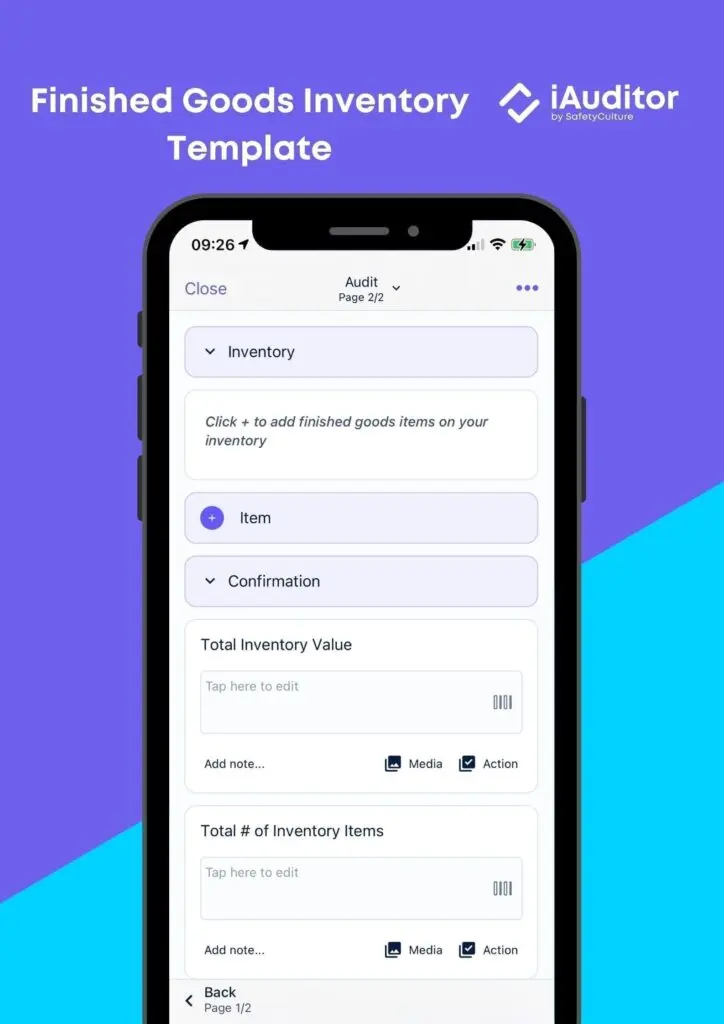What is Manufacturing Inventory Management?
Manufacturing inventory management is the process of tracking the inventory of products and goods in multiple stages of production. Effective manufacturing inventory management reduces production costs and streamlines operations.
Importance of Inventory Management in the Manufacturing Industry
It is important for businesses to plan and utilize an inventory management system because manufacturing inventory management directly affects the production of goods and, in effect, the supply chain. Establishing an effective manufacturing inventory management system can help businesses properly forecast inventory levels, thus, consistently meeting customer demand and expectations.
3 Types of Inventory Used in Manufacturing
There are 3 production inventories that are under manufacturing inventory management: raw materials, work-in-progress (WIP), and finished goods. As stated earlier, these directly affect the supply chain. This means that achieving the appropriate amount of inventory per category is crucial for a business to run smoothly.
Raw Materials Inventory – is the inventory of the basic and natural materials used in the first stage of production.
WIP Inventory – consists of raw materials that were turned into parts or segments of the finished good. This is the inventory of the partially finished products ready for the next production process.
Finished Goods Inventory – this type of inventory contains the end-of-the-line products that are ready for shipment. Finished goods are considered to be made up of work-in-progress materials put together to create them.

Types of manufacturing inventory | SafetyCulture
3 Major Manufacturing Inventory Management Techniques
A good manufacturing inventory management will be based on how smooth and appropriate a business’ inventory process is. There are many different inventory management processes available but here are the top 3 techniques best for manufacturers:
Pull Strategy – this process is essentially in the hands of the customer. In a pull strategy, the manufacturer will supply a product according to customer demand. This keeps inventory costs low but can be difficult to maintain for larger businesses since customer demand can rapidly change. This strategy is appropriate for small to medium-sized businesses or manufacturers that have the right equipment.
Push Strategy – this is more commonly used than the pull strategy. The push strategy is when manufacturers release products according to what they think is the level of customer demand. Forecasting customer demand is riskier than the pull strategy because if customer demand is low, manufacturers are left with a surplus or excessive products in their inventory. Stock inventory can cost business money in terms of storage, risk of spoilage, and other inventory costs. Push strategy is more common among larger-scale companies.
Just In Time (JIT) Inventory Strategy – this strategy is a mixture of both push and pull strategies. JIT strategy takes place when a business anticipates customer demand by having raw materials on hand but only producing the items when there’s an actual demand for it. This strategy keeps overhead costs low but can be susceptible to delivery delays. Any size of business can incorporate this strategy.
Manufacturing Inventory Management Tips
Managing manufacturing inventory can be difficult, especially for large-scale production. The major benefit of improving manufacturing inventory management is saving time and money. Shortages, reproduction, and additional carrying costs can be prevented when a business improves on its manufacturing inventory systems. Here are some tips to help you oversee and improve your manufacturing inventories:
Tip #1: Use the right manufacturing inventory technique
Choose between push, pull, or JIT according to your business size and manufacturing capabilities. It’s important to have the right manufacturing inventory management process to avoid incurring additional costs and to save time.
Tip #2: Identify processes that need to be eradicated or updated
Manufacturers know that quality doesn’t only involve the finished product but also the system, manufacturing procedures, and personnel. Auditing is normally used to collect information for analysis and identify factors that affect the quality of products. Streamline processes by conducting regular audits. Manufacturing businesses such as Gason conduct quality audits of their products to prevent not only defective products from being shipped but minimize reproduction from the start. Quality audits can check manufacturing inventory for raw materials and work-in-progress. Craig, the Quality Assurance Manager for Gason, said that another benefit of incorporating digital auditing tools is that it helps empower his employees to take pride in their work. This, on top of keeping processes up-to-date, will help achieve overall quality during manufacturing operations.
Tip #3: Keep records on important inventory data
Have the information you need by keeping your business’ records on production, operations, and inspections in one place. This allows you to analyze processes that can be improved on. Another reason why record-keeping is important is because it can detect recurring problems in production that manufacturers can take corrective action on to prevent future recurrence. Record-keeping works essentially as an evidence of your manufacturing inventory management system.
Tip #4: Improve visibility by using a digital manufacturing inventory management tool
Improving visibility means being able to monitor processes, operations, and inspections in one place. Marley Spoons Australia utilizes the visibility of data to ensure food safety and quality standards are met during their operations in food production. Data that’s collected using a digital tool such as SafetyCulture (formerly iAuditor) by SafetyCulture and the smart Sensors, allow the business to digitize processes, automate data insights, and conduct production inspections efficiently.
Other benefits of using digital tools are optimization of JIT supply chains, reduction of production waste, and improvement of resource and demand planning.
Create Your Own Manufacturing Inventory Checklist
Eliminate manual tasks and streamline your operations.
Get started for FREEIntroduction to SafetyCulture
SafetyCulture is a cloud-based inspection app utilized by industry leaders in manufacturing such as Unilever, General Electric, Siemens, McCain, and Toyota that can replace tons of paper inventory forms. This digital tool improves visibility, operations, and manufacturing inventory management.

Finished Goods Inventory Template | SafetyCulture
SafetyCulture also ensures that safety and quality standards are consistently achieved. It helps facility teams do the following:
- Perform inventory audits using a mobile device
- Record product SKUs, item quantity, and total costs
- Evaluate the quality of goods
- Capture photos of defective items
- Assign a user or group to perform the inventory inspection
- Create a scheduled inventory assessment
- Get notifications when a scheduled inventory needs to be done
- Store data in unlimited cloud storage
- Generate real-time inventory reports anytime, anywhere
- Save inventory forms as a DOC, PDF, CSV, or JSON file



